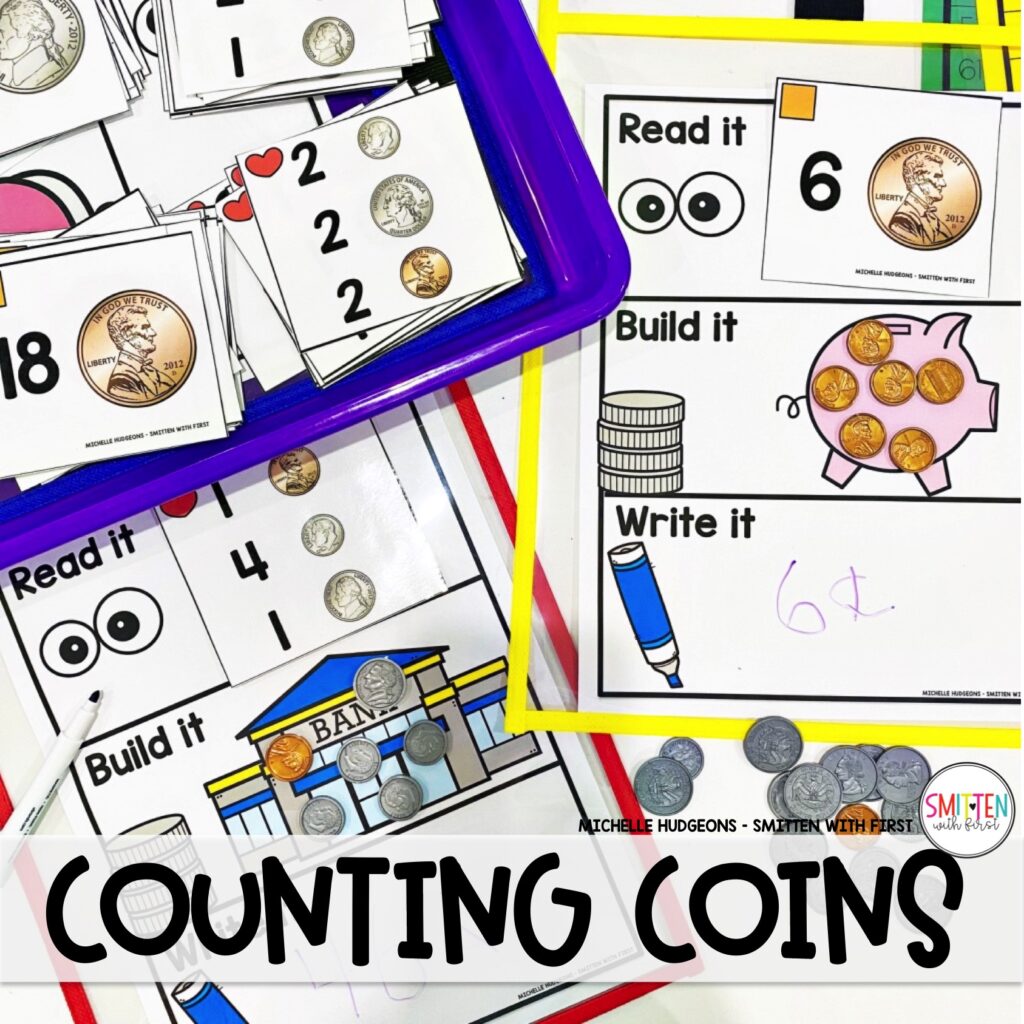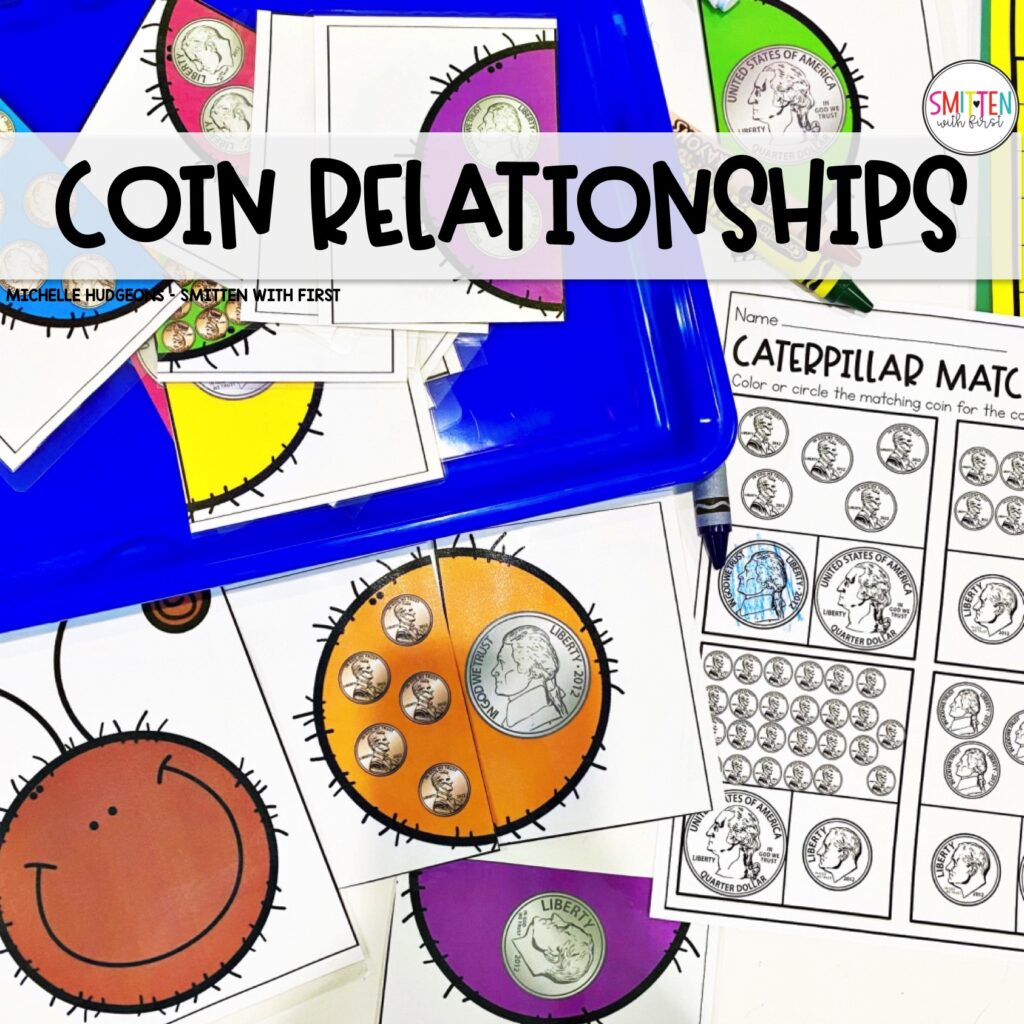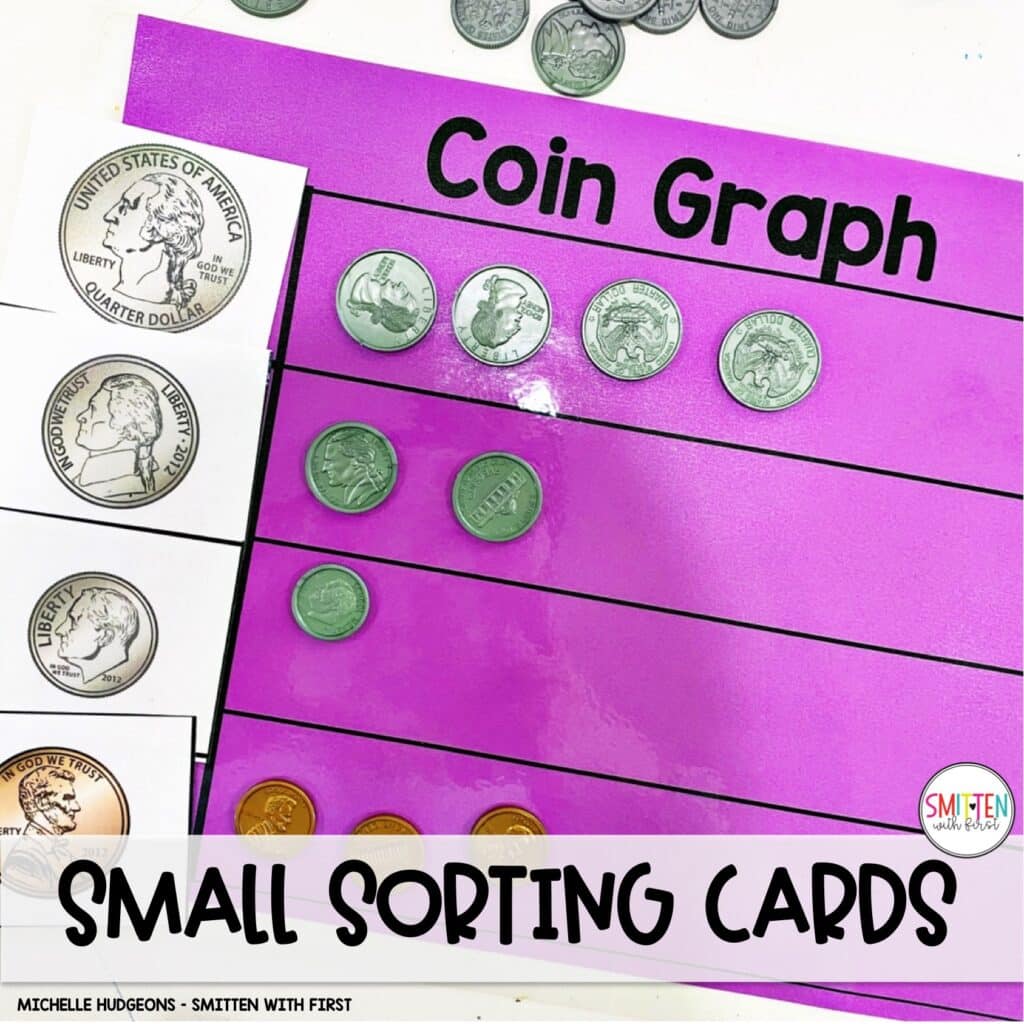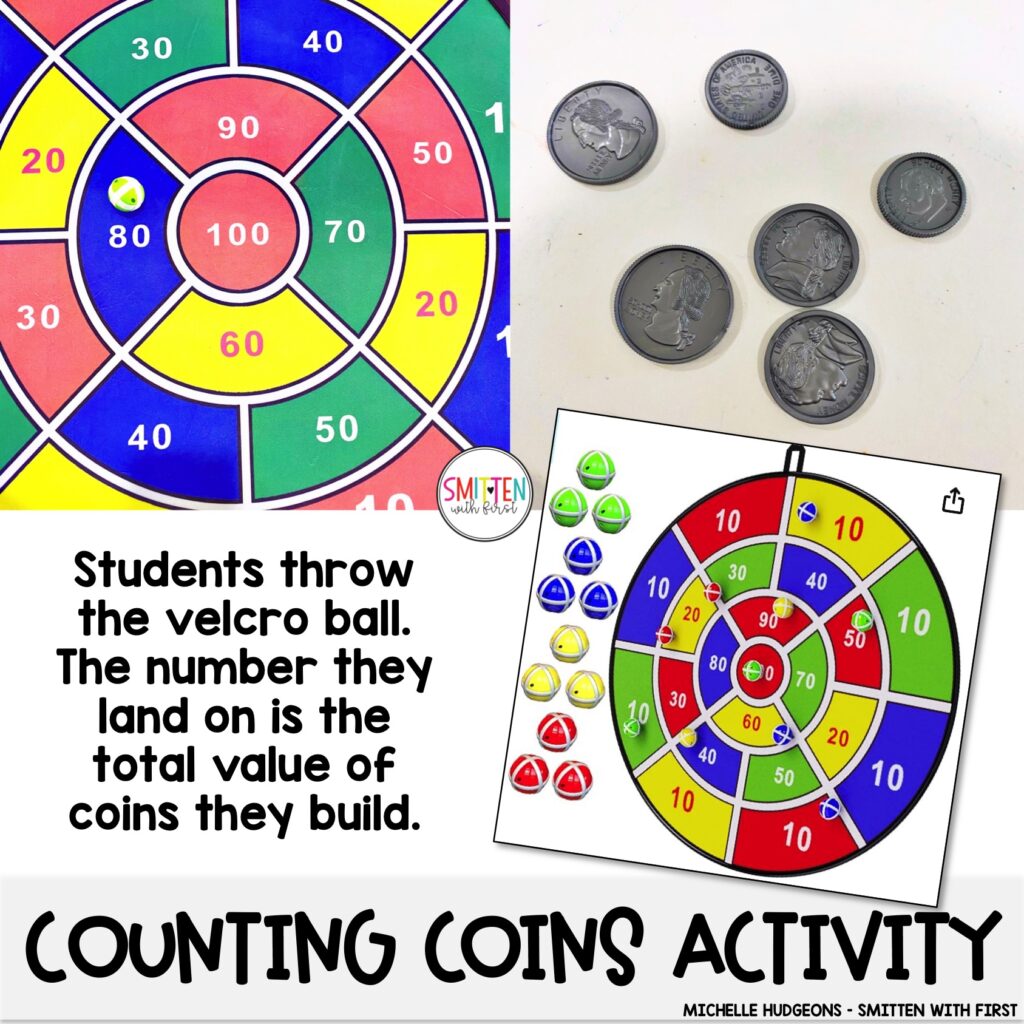I personally believe the key way to teach coin identification and counting coins is by a lot of exposure throughout the entire school year. Many times the standard is taught once during the school year, we move on to the next standard, and students don’t see coins again until the next school year. The activities below can all be used throughout the year since they do not have a monthly theme. This unit hits so many skills that it can be used in kindergarten, 1st grade, or 2nd grade. I hope you find this post helpful in teaching coins. Alright, let’s jump in.

Grab all of these activities in The Complete Coin Unit, HERE.
*Post contains affiliate links* I earn a small commission when you use the affiliate links.
Counting Coins Activities and Centers
These Coin Read Alouds are great for your library center or to display on the board and read throughout the unit. These can all be found here.

These Printable Coin Read Aloud include real pictures and are simple to print and bind together. Bind the pages together with page protectors and binder rings, a binding machine, or laminate and staple together. Use them as a class read aloud when introducing each coin, as a reference when making a class bubble map, put them in the class library, display on the board, or put them in the math or literacy centers!

Coin Posters are perfect to display in your classroom all year long. Add magnet tape to the back and display them on a white board, put them in a math center, display at the small group table, make them into a book, hang them above tables and use them in place of table colors or table numbers to call tables (example: Penny Table, Nickel Table, etc), put them on a binder ring and use them as flash cards during restroom time or any waiting time.


Add magnet tape to the back of these Vocabulary Cards and use them on a white board, or display them in a math or literacy center, use them in a writing center, display at the small group table, use on a word wall, use in a literacy station and students can build the vocabulary words, or use them for ABC order.

Ah, I LOVE all of these Sorting Mats. Put them in page protectors or dry erase pockets. They can be used with small groups, in stations or centers, or use them for whole group lessons. You can also use them with the Spin and Cover activities that are included in the unit, as well as the Small and Large Sorting Cards, and the Counting Coins Variety Cards.

There are over 40 mats included. You can also use them with the printable coins that are included in the unit, play coins, coin stickers, or coin stamps.






I like to incorporate Skip Counting with coins by counting by 2’s, 5’s and 10’s, plus it is a standard to teach it along with counting coins in some states.



Using as many visual activities as possible is going to be so helpful when teaching skip counting with a collection of coins.

Anchor Chart (or Butcher Paper) activities are instant engagement. Add any theme to a large piece of anchor chart paper or butcher paper and you have one large interactive activity that can be used over and over again. Students love these. Draw number lines, tally marks, or circles on the thematic pictures for students to visually see the value of the numbers as they are skip counting.
I also like to use anchor charts for teaching heads and tails, identifying coins, and counting coins. You can see multiple thematic examples and all the different ways to use them for money here.



These Skip Counting Puzzles are also great when teaching coins. These can be downloaded for FREE here!

Pet Shop Match is a fun, interactive activity for using coins to match the value of each pet shop item. Use as a station activity, intervention, partner activity, or as a table group activity. To use as a table group activity, place the activity in the middle of each table group. Students at that table share the activity pieces. Each student has their own recording sheet.

I Spy Coin Values – identify coins by finding the matching coins


You can grab these magnetic bingo chips here.
Piggy Bank Count – counting coins by finding the coins that match the value.


Spy and Graph – identify coins by find the matching coins and graph

I love pairing these mini flashlights with this activity. They add an extra layer of fun!
Spin and Cover – spin the spinner and cover the matching coins. This also includes mats for Needs/Wants and Spend/Save.




Valuable Words – count a collection of coins by building words and finding the value of the coins.

Read Build Write Mats – read the coins on the card, build the collection of coins, count and write the value



Cover It – count a collection of coins and find the matching value



Dough Mats – stamp or press coins into the dough and count the collection of coins



I also have an online version of Treasures in the Sand here.
Comparing Coins – compare the value of a collection of coins by building the collection of coins, find the value, and write the comparison symbol in the circle.

Adding Coins – build two collections of coins. Count the collections, add and write the total value using an addition sentence.

Pattern Cards – identify the coin pattern and extend the patterns



coin stamps can be found here
Missing Coins – these are similar to the Pattern Cards, but instead of creating a pattern, students look at the value and complete the card by identify the missing coins


Caterpillar Match – identify and match coin relationships

Sandwich Shop – use coins to measure sandwich items. Students can also compare and explain why lengths are different using quarters and dimes


Pizza Shop – use the pizza menu to find the matching total amount for each pizza

Ice Cream Truck – identify and match coins and values

Wallet Craft – identify and match coins. Coin names and value options are both included to differentiate as needed.


Coin Rubbings – identify coins or count a collection of coins by rubbing coins on the strips

Small Sorting Cards – use with any of the sorting mats that are included with the unit, use in a pocket chart center, small groups, or use velcro on the back of the cards and use with colored paper and one of the included sorting heads

Large Sorting Cards are also included! These are perfect for pocket charts.




Class Graphs – I believe there are 10 different graphs included for a variety of options. Use with the provided student cards to create a picture graph for students to color and place on the graph. You could also use the graphs with these FREE student photo cards. Or use colored construction paper to create a bar graph for student choices. Another idea is to use the graph titles and labels during morning meetings, math talks, or as a journal prompt.




Charts and Number Lines – these are my favorite tried and true way to teach counting a collection of coins. Keep within student reach and make them fully accessible to students when counting coins. You can see a step by step video on how to use them HERE.
This Large Velco Dart Board is so fun to use for counting a collection of coins. Students throw the velcro ball onto the dart board. The number they land on is the total value of coins they build. Interactive and fun!

This unit also includes ways to organize the unit as well as labels and pictures.
Oh, and THESE worksheets are a FREE when you grab the BUNDLE!

I hope this post was helpful to you and gives you some ideas for teaching coins in a fun, engaging way.
You can grab all of these activities in The Complete Coin Unit, HERE.
I also love These FREE games.
Coin Flash cards are also great to use for fluency! Simply display on the screen and students call out the name of the coins.
Say or Write Counting Coins is fun! Simply display on the screen and students call out the value of the collection of coins or write the value on their desks or student white boards.
Pin this post to save for later!

See all my Amazon Favorites here!
